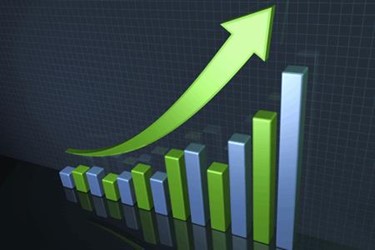Ecommerce Is The Biggest Driver For Black Friday And Cyber Monday Sales

Record-breaking online sales predict a positive outlook for retailers.
Leading retailers, including Saks Fifth Avenue, Ann Taylor, Bloomingdale's and Lord & Taylor, saw a 28 percent year-over-year increase in average total sales from Thanksgiving through Cyber Monday. This is based on data collected through Salesfloor’s platform. Shoppers also requested more help from online associates when shopping – indicated by a 31 percent YOY increase.
"Salesfloor's Black Friday and Cyber Monday data proves that retailers who are evolving to meet the needs of omnichannel shoppers are seeing positive pre-holiday results," Oscar Sachs, co-founder and CEO of Salesfloor said in an emailed statement. "Modern shoppers want it all – when and where it’s convenient for them – whether that’s shopping in store Thanksgiving evening, or online from the couch. By empowering associates to connect with shoppers across channels and create a personalized relationship, shoppers are more inclined to turn to their trusted associate or store in times when they have access to various deals at multiple retailers. With this strategy, top retailers saw a 28 percent year-over-year increase in average total sales from Thanksgiving to Cyber Monday, a huge gain in an age dubbed “the retail apocalypse."
Last year, American shoppers spent $5 billion in 24 hours, an16.9 percent increase in dollars spent online over Black Friday 2016. Additionally, according to Adobe, Cyber Monday was the largest-ever single day of online sales in the U.S.
Over 10,000 retail associates used the Salesfloor platform to serve customers online through chat, marketing and connect tools, achieving unprecedented results during the initial holiday period, including:
- Increased conversions and sales
- 48 percent year-over-year increase in online conversion rates.
- 28 percent year-over-year increase in average total sales.
- 13 percent year-over-year increase in sales per average user.
- 7 percent year-over-year increase in average order value.
- New customer acquisitions
- New customer acquisitions increased by 264 percent.
- For every $100 spent online via Salesfloor, retailers are able to attribute $68 purchased in a brick-and-mortar location.
- Growth in shopper requests for help from online associates
- Number of requests grew by 31 percent year-over-year per user.
“Overall online sales for retailers across the U.S. soared from Thanksgiving to Cyber Monday, with Adobe research even finding Cyber Monday was the largest-ever single day of online sales in the U.S. Our retailers’ success mimics this, and we know is because of the level of personalization Salesfloor provides to enhance the shopping experience. This also directly impacts in-store sales, with stronger online service driving foot traffic into physical stores. For example, for every $100 spent online via Salesfloor, retailers are able to attribute $68 purchased in a brick-and-mortar location. For retailers to thrive this holiday season, improving and expanding their online service offerings for shoppers is essential.”
And while Cyber Monday sales hit new heights, online sales aren’t the only metrics businesses should be heeding. New data from call analytics provider CallRail found that inbound call volume on Black Friday and Cyber Monday increased nearly 60 percent year-over-year. Even more significantly, the number of inbound calls increased 229 percent and 235 percent over the past two years for Black Friday and Cyber Monday respectively, proving that the phone is still an important channel for consumers during these busy retail holidays.
Social media also reigned supreme this holiday kickoff weekend. Data from Sprout Social's Listening Suite shows that from Nov. 20 to 27, 2017, Cyber Monday-related terms and hashtags had 422,782 total message volume with a potential reach of 10.2 billion. That’s compared to 2,072,773 Black Friday-related messages with a potential reach of 29 billion during the same time period.
While promotion ramped up steadily the previous week, messages spiked on Cyber Monday itself, with 244,729 messages sent and 18,508,580 Retweets, which earned 997,823 replies and 27,095,790 Likes.
Sprout also found that overall, emotional response was 65 percent positive, with the top positive related hashtags including #bestprice and #deals. And while on Black Friday, 63 percent of messages were posted from mobile devices, less than 48 percent of Cyber Monday messages came from mobile, while 52 percent came from the web.
Sprout Social Listeners, a new social listening toolset, enables marketing professionals to search for keywords, hashtags, brands, industries and multimedia content to analyze sentiment, find topic correlations and uncover trends. Listeners surface real-time social data from Twitter and is built alongside Sprout’s best-in-class engagement, publishing and analytics toolsets to create a seamless experience.
“While brands develop their Black Friday strategies months in advance, even promotional efforts that extend over the weekend typically get the biggest push on the day itself,” explained Andrew Caravella, vice president, strategy and brand engagement, Sprout Social. ”Brands who are in tune with their customer base also know that if someone buys Friday, their experience is just beginning—those shoppers are then taking to social to talk about the deals they scored, request customer service or ask questions about their orders, and engage with the brand around future promotions.”
“Brands running significant Black Friday campaigns—or any major marketing campaign—should ensure that their social strategy includes staffing up and training their customer service team in advance of those efforts and well into January to ensure that consumers are able to share feedback and have positive experiences throughout the holiday season," continued Caravella.
